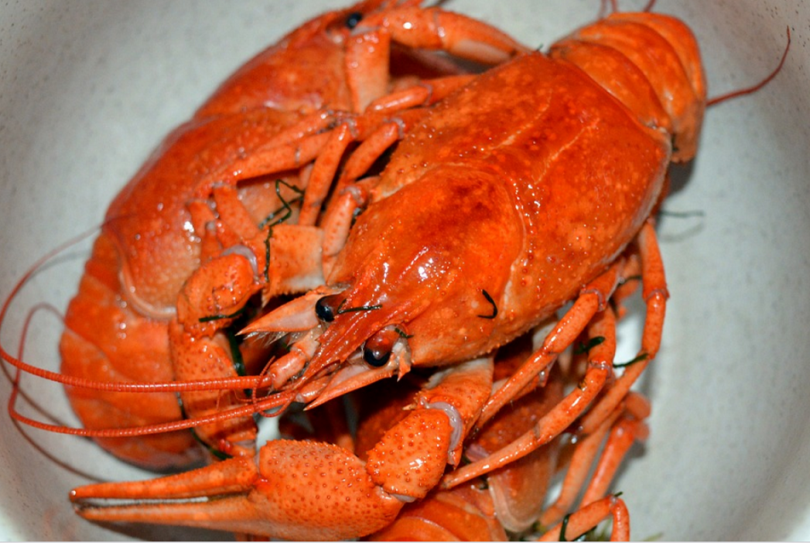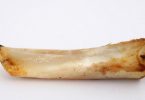Today’s question: can dogs eat lobster? Scroll down for detailed answers.
Dogs tend to eat any source of food that is possible, whether the food is for dogs for humans, a meat source, or a veggie. Dogs will eat most all food offered or all food that is foraged. Dogs are genetically dispositioned to hunt for meat and to benefit from a protein source more than any other source. In this aspect, may humans offer dogs seafood as a way of incorporating meat into their diets?
Those who enjoy seafood may truly enjoy seafood as a luxury food. In the event you have lobster and luxury to share, is it possible to offer dogs seafood without any ramifications? Can dogs eat lobster? Yes, they surely can! As a dog owner, the question about what foods are safe for you to feed your dog may be a constant source of stress. You read articles on how and what to feed your dog and your friends may be prone to offering advice. There are many studies showing the negative consequences of eating certain foods, and you may feel overwhelmed with choices in this regard. Which foods are safe? Which are harmful?
To best determine the safety of a particular human food for your dog, the breed and the size of your dog needs to be taken into account above all else. The toxicity of the food coupled with any potential hazards, such as shells, skins, and peels also needs to be determined. In the manner of meat sources, foods are generally safe to feed your dog given that the source is free of toxins and potential intestinal blocking hazards. Meat is also a good source of protein and the first choice of your dog to enjoy, given his/her evolutionary disposition.
Your dog probably has his/her own brand of dog food that he cannot seem to have enough of, and is reluctant to try any other kibble or dog food offered. Dogs who enjoy their particular every day food, but who does not like a bit of variety in their meals, may be apprehensive in trying a new food offered by their master. If a dog does not like options in dog food, the dog may not like options in human food either.
Verifying a food is safe for your dog should be done before the actual food is given. Your veterinarian is the best source of information in this regard, be sure o ask your vet about the particular food you wish to add to you pup’s diet at your next visit. You should also do some research before adding any seafood to your dog’s meals as there are many opinions about whether seafood is safe for dogs or not. Some people seem to think that lobster is completely safe for dogs while others disagree completely. Seafood may affect humans differently, and the same is true for dogs.
All people and animals digest particular foods in their individual way. Trying out a new food on your dog without researching complications first may put your dog in harm’s way. In the event you wish to try a new food on your dog, after you have done your research, offer the seafood in small amounts and watch for any side effects that may occur. If you dog does not seem to be suffering from any side effects, be comfortable in knowing your dog’s system is able to handle that particular food item. When a dog is deemed safe to tolerate seafood, offer the meat only on occasion and always under a watchful eye.
Can Dogs Eat Lobster?
Yes, they can. While most dogs have no issues with eating lobster at all, there is a possibility that some of them may be allergic to it. If you have never fed your dog lobster at all, you should give very little lobster initially. Then observe your dog carefully during the next few hours. An adverse reaction will be apparent very soon. If your dog remains perfectly normal and does not exhibit any unusual behavior, you can be relieved and add lobster to your dog’s meals in future. You do need to ensure that you do not feed too much lobster to your pooch. Feeding your dog too much of any type of human food is bound to cause stomach upset and other types of problems. Just because your dog can tolerate a small amount, does not mean your dog is able to tolerate a large amount or a human-sized portion.
When offering seafood to your dog a meat source, keep in mind the validity of lobster. Lobster is an excellent source of valuable nutrients. Although lobster is generally considered to be healthy for people, unfortunately, it is not very good for dogs. While lobster has a great many vitamins and nutrients that are beneficial to humans, the lobster itself may be deemed unhealthy. The reason lobster may be deemed unhealthy even if packed with vitamins is that lobster is pretty fattening overall. Additionally, the high levels of sodium found in this sea food make it unhealthy as food for your dog in large quantities. Sodium is very harmful for dogs, particularly large quantities of sodium can lead to severe damage to your dog, leading possibly to kidney damage, which in turn could lead to a coma or even death.
While lobster has a great many benefits, the negative affects outweigh the positive in this regard. Vitamins and nutrients found in seafood may be offered to your dog from other substances that are less fattening and with lower sodium contents. The idea of giving your dog a rich meat source with good vitamins, high protein, and a variety of taste and texture is great; however, care must be exercised to offset the fattening content and the sodium levels.
Top Tips for Feeding Your Dog Seafood
- Most vets recommend that you must cook any kind of seafood before you feed it to your dog. This is because there are various kinds of bacteria and parasites found in raw seafood that could make your dog ill.
- Do not use any spices while preparing seafood for your dog. The very spices and condiments that add taste to seafood for people can make your dog sick. The best way to serve all kinds of seafood to your dog is to steam or boil it in plain water until it is cooked properly.
- When introducing any new variety of seafood to your dog, start with a small serving. This will help you to identify any allergies your pet may have towards any specific kind of seafood that you may yet be unaware of. If there is an allergic reaction, take it to the vet immediately.
- Seafood should only be given to dogs in moderation. Although your dog will probably love it, seafood does contain varying quantities of mercury, which could be potentially harmful for dogs in large quantities.
- You must remove all the bones in any seafood that you plan to feed your dog. The bones pose a serious threat and can cause choking or obstruction in the dogs digestive system.
Other Seafood that Your Dog Can Eat
Seafood itself is a good source of nutrition and also possesses high level of fish oil. Fish oil is good for one’s brain, heart, and circulatory system and fish oil has also been proven to be safe for dogs. Those who incorporate fish oil into their dog’s diet improve their dog’s health as well as their joint mobility and comfort. Dogs do not technically need the addition of seafood into their diet, but for those looking to include seafood, but wish to avoid lobster, there are other alternatives for your dog to enjoy.
Salmon is another kind of seafood that you can feed your dog. Given in moderate quantities, salmon has nutritional benefits for your canine friend. The salmon filet should be well-cooked and de-boned before being given to your dog. The cooking is very important as a parasite found in salmon when raw can cause salmonella disease. De-boning the fish is also important due to choking hazards and the risk of intestinal blockages. The good news is that it is completely eliminated once the fish has been cooked properly.
Shrimp can be given to your dog too. However, it is extremely important to remember that the shrimp must be peeled before your dog gets to eat it. The peel is quite hard and your dog may have trouble in digesting it. Dogs often do not enjoy the peel at all.
Tuna has good nutritional value for your dog. However, you must keep two things in mind when offering tuna. Firstly, there is a high level of mercury in tuna, so too much tuna may not be good for the doggie. Secondly, canned tuna has high levels of salt which makes it unsuitable in larger quantities. When offering tuna, be sure to use low sodium tuna, caned in water, and from a low mercury water source. In the event you choose not to offer canned tuna, some local butchers or fisherman offer tuna fillets and you are bale to ask the particular butcher more intricate questions on the type of tuna you are purchasing.
Crab is a somewhat controversial seafood to offer as there is a split opinion on whether it is suitable for dogs or not. If you do wish to feed your dog crab, just use small quantities without shells. You should understand that the large amounts of iodine found in crabs may be bad for your pet dog as most dogs are allergic to it.
Clams and oysters are also safe for dogs in small portions. You must remember to take their shells out. As dogs like to chew things, your dog may try to chew the shells too, which are not safe for dogs.
Conclusion
Yes, dogs can eat lobster and most other sea foods. However, you should feed small quantities of lobster and not too frequently or large sized servings. Otherwise, lobster or other seafood can lead to health issues.
Additionally, if in doubt, you should always consult with your dog’s veterinarian first before adding any new foods into your dogs diet.
References:
http://www.dogforums.com/dog-health-questions/98866-safe-feed-my-dog.html
http://aboutdoggies.net/can-dogs-eat-lobster/
http://pets.webmd.com/dogs/ss/slideshow-foods-your-dog-should-never-eat
http://napasdailygrowl.com/can-dogs-eat-seafood-without-getting-sick/









Leave a Comment